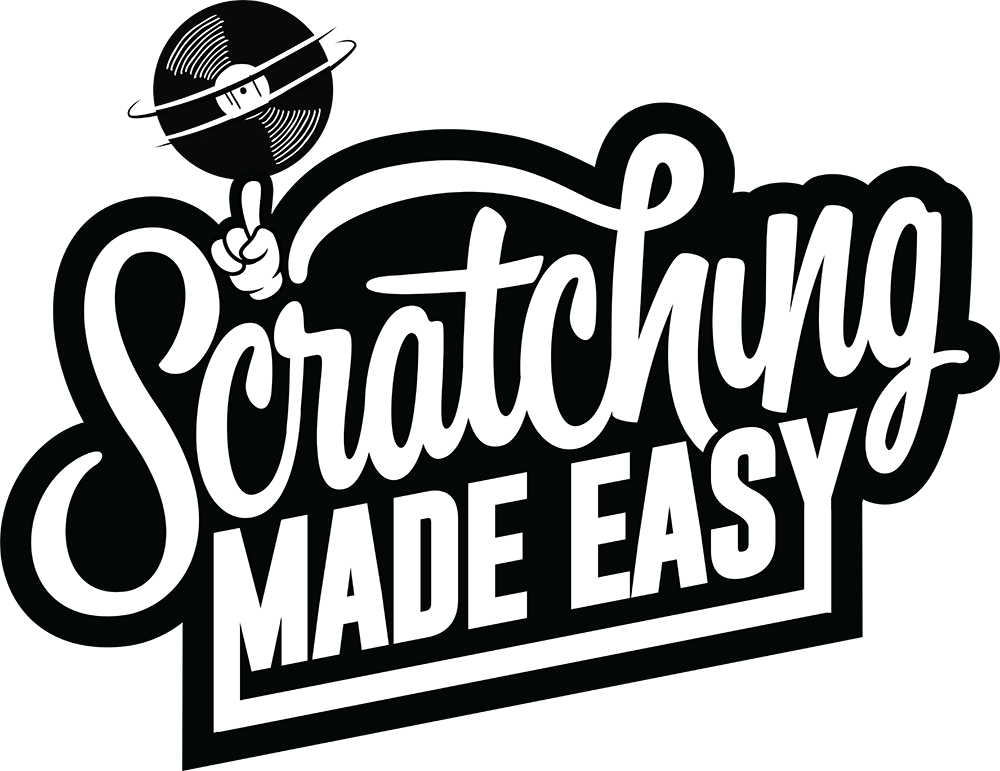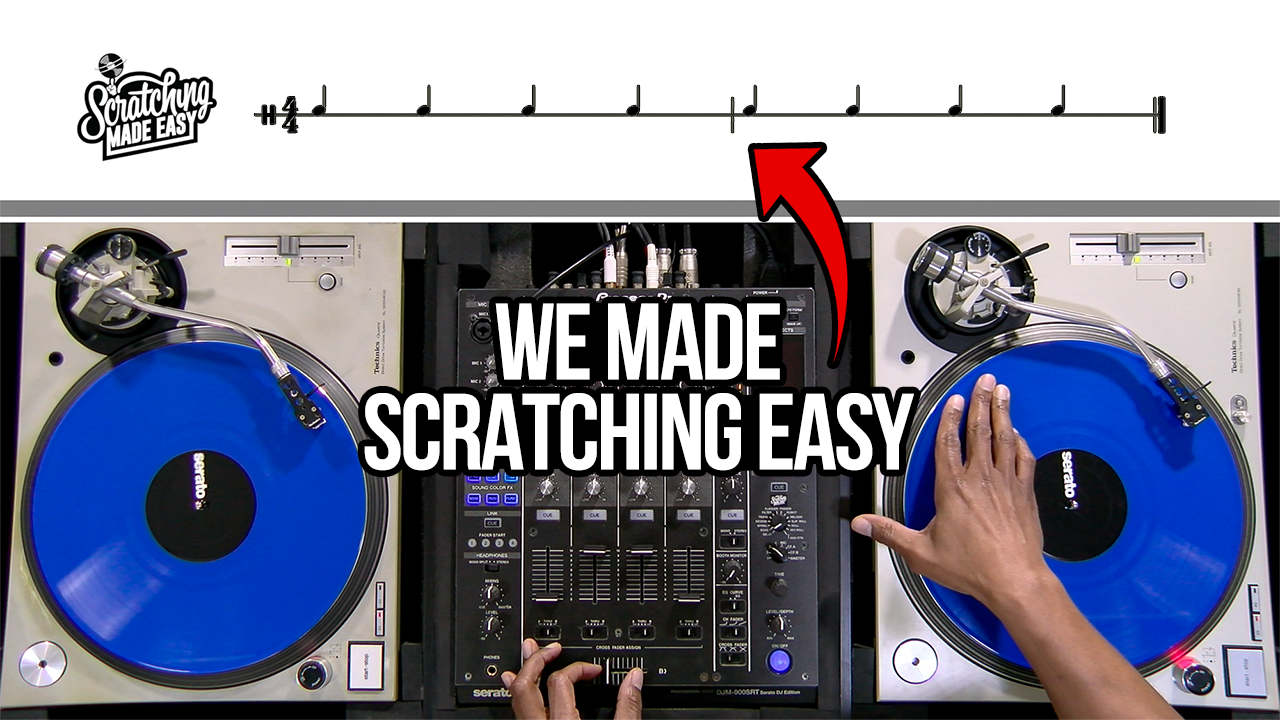Hey what's up? This is Ronin from Scratching Made Easy. In this lesson we will go over quarter notes and quarter rests.

Hopefully, you’ve already checked out our previous video on some of the basics of rhythm. If you’ve already done that, you’ll be up to speed with what we are about to cover. In the last video you learned that the bottom number of the time signature tells us which note will be the pulse of the music.

Remember that the pulse is what we often bob our heads to when listening to music. In other words, the pulse is the beat. When the bottom number is a four, this means the quarter note will get the beat. When we count this rhythm, we count ONE TWO THREE FOUR ONE TWO THREE FOUR. We only count to four, because the top number of the time signature lets us know only four beats are allowed in one measure.

Rhythm 1
Now let's apply what you just learned to the baby scratch. Put your hand in a comfortable position between nine and twelve, and make sure that the cross fader is in the open position, so we can hear the sound. Now let's play two measures which are often called bars. The tempo is at 85 beats per minute. Here we go!

Rhythm 1
Congratulations! You just played your first two measures. Now let's play the rhythm again, but this time let's focus on counting out loud. I know it sounds crazy, but overall, this will help you in the learning process. Here we go!

The first time I did this I realized that my timing was terrible, and I had a hard time controlling the record and staying on beat. If you keep at it, all of that will change over time. That being said, let's move on to the quarter rest.
This is a quarter rest.


Wherever there is a quarter rest, you should rest for one beat. When we count this rhythm, we count ONE, TWO, THREE, ONE, TWO, THREE.

Rhythm 2
We only count to three because there is a quarter rest on beat four. Now that we have covered the basics of the quarter rest, let's play these next four bars.

Rhythm 2
Let's play the rhythm one more time and make sure that our strokes are clean. When I say clean, I mean the strokes should sound the same. We want a clean and consistently good sound. Here we go!

Rhythm 3
Now let’s move on to another example, but this time let's focus on playing even strokes. We want the strokes to be evenly spaced apart. You want to be right on beat. Here we go!

Rhythm 4
Now that you have some of the basics, let’s move on to our last rhythm. We’ll continue working on getting strokes that are evenly spaced apart, that are clean, and on beat. Alright here we go!

If you’re new to this, it’s likely that you’ve made some mistakes—and that’s normal. Be sure to practice until you get the hang of it, and always practice with both hands. If you liked this video, be sure to check out our website, scratchingmadeeasy.com where you find our extended premium lessons. If you have any comments, please leave them in the comment section below. See you next time. Peace!



